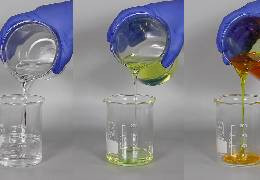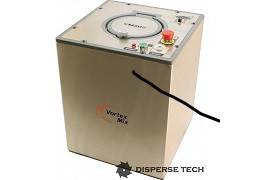The following tables show standard dimensions for keys and their grooves.
The following tables show standard dimensions for keys and their grooves.

To produce the best quality dispersion in the least amount of time, an investment casting dispersion blade must be a durable high-shear blade.

Viscosity Conversion table comparing some of the typical viscosity scales used in Paint and Coatings including: Poise, Stokes, Ford Cup, Zahn Cup, and Krebs

In the Malcomizing heat treating process the passive oxide surface film of the stainless steel is broken down to permit nitrogen diffusion into the steel, at relatively low temperatures. This increases the Hardness to around 64-68 Rockwell C.

The blade diameter should be roughly 1/3rd the diameter of the vessel...

Most dispersion blades are formed from a circular disk of material, typically 304 stainless steel. Teeth are formed around the perimeter of the disk by cutting slits into the disk and bending the resulting tabs.

Beyond impeller bore configurations, with the Conn styles as well as other louvered or vented styles open area in the center of the impeller must also be considered. Typically, reinforcing discs, taper plates, sandwich the blade to stiffen the disperser disc. Due to the louver placement on the conn blade, the size of these disks, and with small sizes - the diameter of the mounting hub must be considered.

The design of a dispersion system begins by defining the batch size and product characteristics. From there we can begin to determine blade size, types, and number which will then allow us to define shaft rpm and horsepower requirements.

Inverters offer many benefits over traditional mechanical drives with fewer moving parts, larger speed ranges, broader horsepower range, and reduced maintenance. But they do have limitations the largest of which is their torque characteristics. sss

Mix Scale is used to quantify the mixing intensity needed for a given process as well as provide a frame of reference for mixing scale-up.

Blade Style, diameter, the material of construction, wear treatments need to be considered when ordering a dispersion baldes.

Review of the function and operation of planetary-centrifugal mixers. Published July 2010, Adhesives and Sealants Industry Magazine.
Latest comments